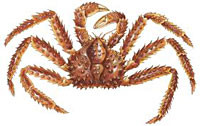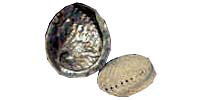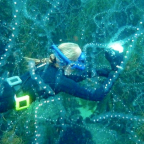
Paractopus dofleini
Although there are over 100 species of octopuses (Genus Octopus) in the world as well as numerous species of deepwater and pelagic octopuses (Order Octopoda), our knowledge of them comes almost entirely from just a few species. (Octopus vulgaris, Octopus bimaculatus, Enteroctopus dofleini, Eledone cirrhosa).
The Giant Pacific Octopus (Octopus dofleini) is the world’s largest species of octopus, weighing in at 18-25 kg with a 9.5m. arm span.. It has recently been re-classified as Enteroctopus dofleini. The genus Enteroctopus embraces the other giant octopuses of the world, viz. E. dofleini in the north Pacific, E. megalocyathus off S. America and E. magnificus off southern Africa.
Octopuses are cephalopod molluscs characterized by having eight arms, no...
Read More











Social Profiles